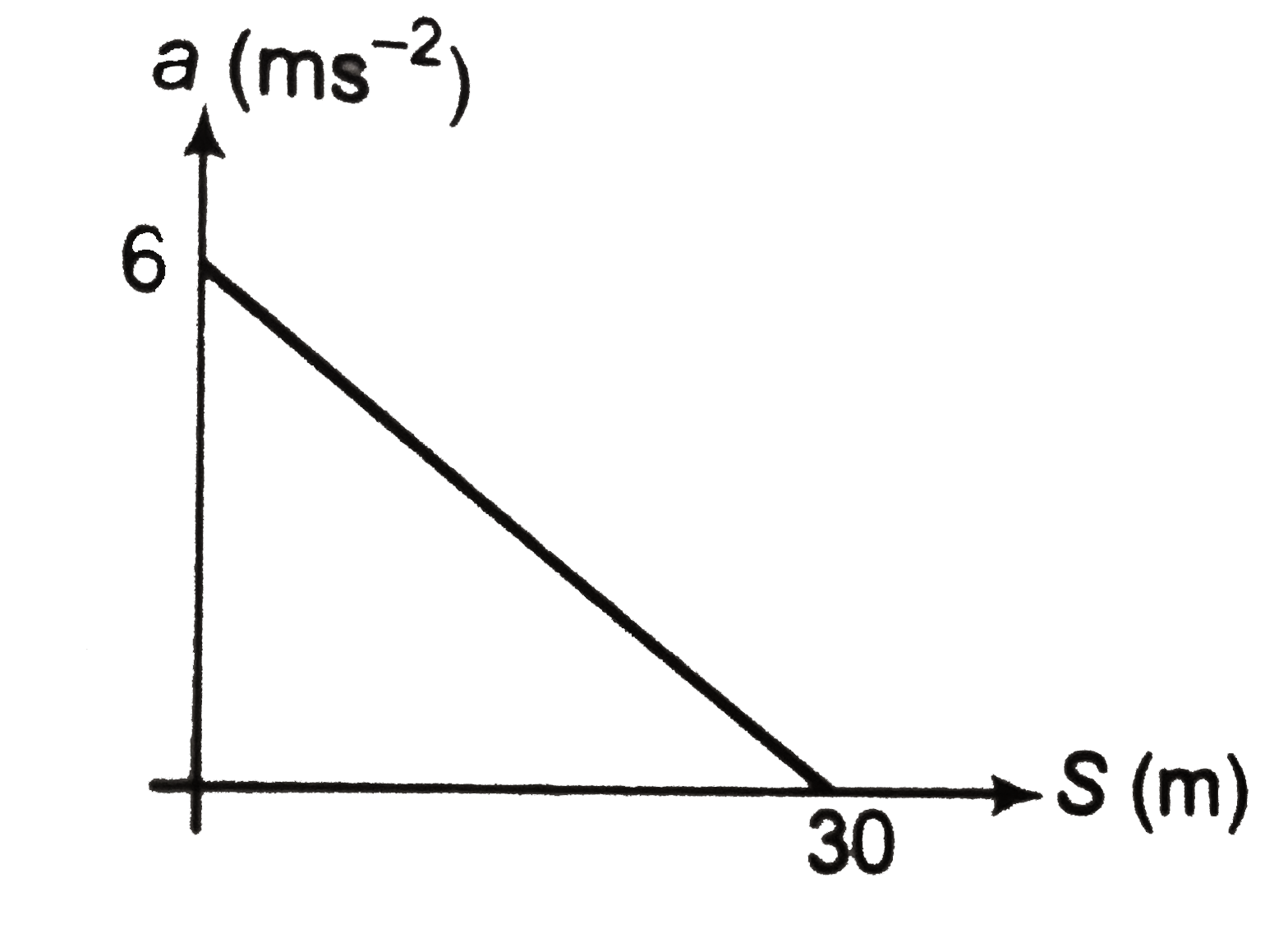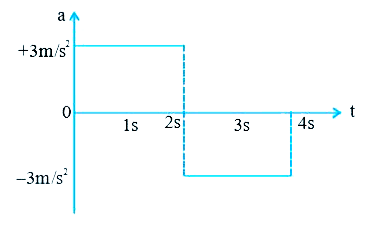The car start from rest at x=0 and is subjected to an acceleration shown by the a-s graph.Draw the v-s graph and determine the time needed to travel 60 m.

5.48 s
Topper's Solved these Questions
- MOTION IN A STRAIGHT LINE BOOK - AAKASH SERIESCHAPTER - MOTION IN A STRAIGHT LINE EXERCISE - Question for descriptiv Answers
7 Videos
- MOTION IN A STRAIGHT LINE BOOK - AAKASH SERIESCHAPTER - MOTION IN A STRAIGHT LINE EXERCISE - Short answer type question
16 Videos
- MOTION IN A STRAIGHT LINE BOOK - AAKASH SERIESCHAPTER - MOTION IN A STRAIGHT LINE EXERCISE - Numerical exercise(LEVEL-1)
22 Videos
- MOTION IN A PLANEBOOK - AAKASH SERIESCHAPTER - MOTION IN A PLANEEXERCISE - QUESTION FOR DESCRIPTIVE ANSWER
7 Videos
- MOVING CHARGES AND MAGNETISMBOOK - AAKASH SERIESCHAPTER - MOVING CHARGES AND MAGNETISMEXERCISE - EXERCISE-III
49 Videos
Similar Questions
A train starts from rest at S=0 and is subjected to an acceleration as shown in figure. Then,

View SolutionThe jet plane starts from rest at s=0 and is subjected to the acceleration shown. Determine the speed of the plane when it has travelled 60 m.

View SolutionA particle starts from rest at t=0 and undergoes an acceleration as shown in figure.
Draw the velocity-time graph of the motion of the particle during the interval from zero to 4 second.

View SolutionStarting from rest at s=0,a boat travels in a straight line with an acceleration on as shown by the a-s graph. Determine the boat's speed at s=40,90 .

View SolutionA particle starting from rest moves in a straight line with acceleration as shown in the a-t graph. Find the distance (in m) travelled by the particle in the first four seconds from start of its motion.
Q
View SolutionThe v-s graph describing the motion of a motorcycle is shown in figure. Construct the a-s graph of the motion and determine the time needed for the motorcycle to reach the position s=120m. Given In 5=1.6.

View SolutionA particle starts from rest and accelerates as shown in the graph .Determine (a)the particle's speed at t=10 s and t=20 s and (b)the distance travelled in the first 20 s.

View SolutionA car begains from rest at time t=0, and then acceleration along a straight track during the interval 0<t≤2s and thereafter with constant velocity as shown in figure in the graph. A coin is initially at rest on the floor of the car. At t=1s, the coin begains to slip and its stops slipping at t=3s . The coefficient of static friction between the floor and the coin is (g=10m/s2)

View SolutionAt t=0, a particle starts from reat and moves along a straight line, whose acceleration-time graph is shown in .
 .
.
Convert this graph into velocity-time, From the velocity-time graph, find the maximum velocity attained by the particle. Also find from v−t graph, the sisplacement and distance travelled by the particle from 2 to 6s,
View SolutionA car acquires a velocity of 72 km h−1 In 10 s starting from rest. Calculate :
(i) the acceleration,
(ii) the average velocity, and
(iii) the distance travelled in this time.
View Solution
